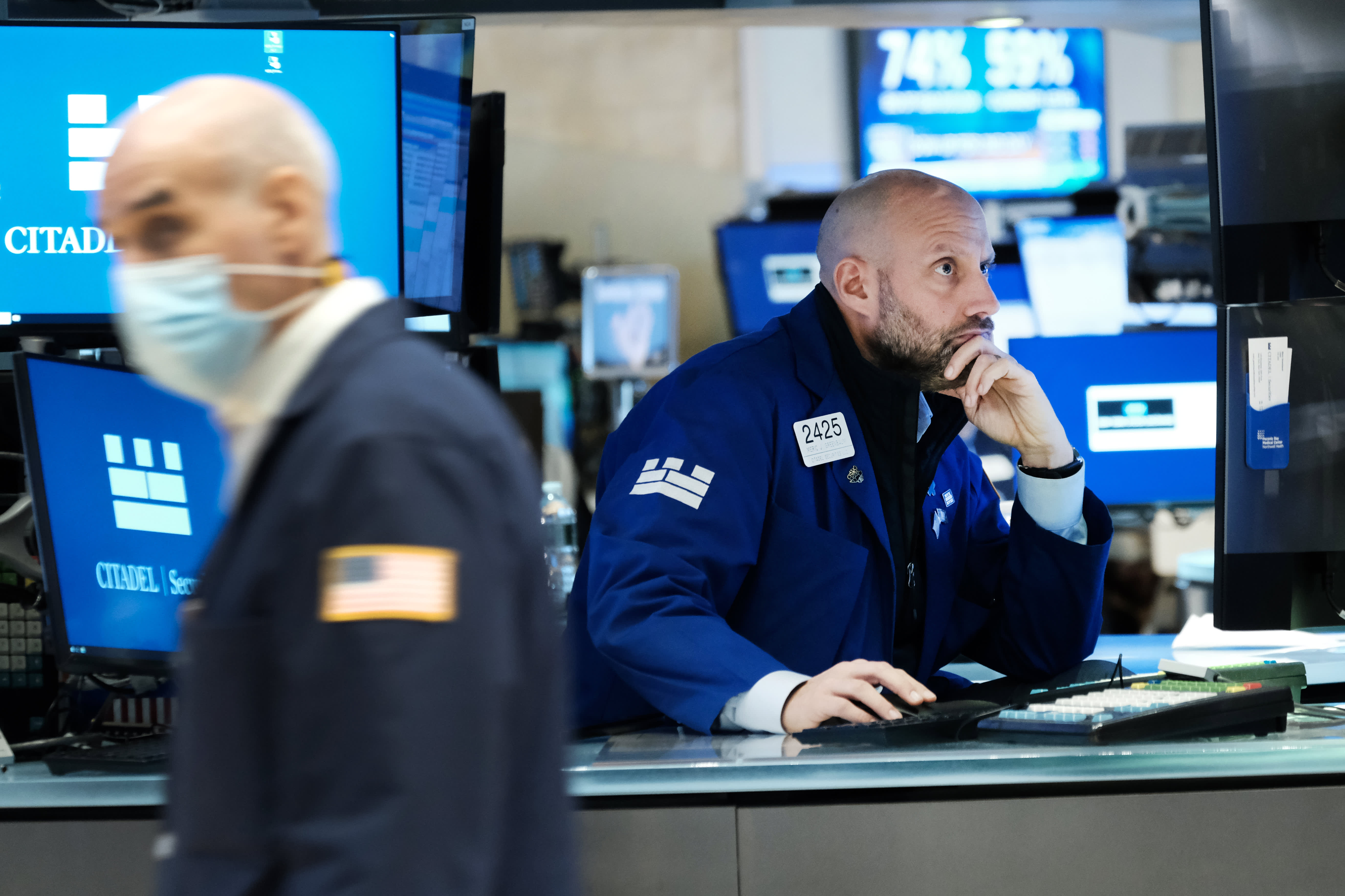Stock futures are flat after Thursday’s sell-off as investors eye volatile bond market

Stock futures were little changed in morning trading Friday after a sharp Thursday sell-off on Wall Street spurred by the hottest inflation reading in four decades that was even higher than expectations.
Futures on the Dow Jones Industrial Average ticked up 6 points, or less than 0.1%. S&P 500 futures and Nasdaq 100 futures were also up 0.1%.
Thursday’s rout in risk assets came as Treasury yields spiked in reaction to data that showed consumer prices surged more than 7% last month, the highest gain since February 1982. The 10-year Treasury yield jumped above 2% for the first time since 2019, while the rate-sensitive 2-year yield soared more than 26 basis points at one point in its biggest intraday move since 2009.
Yields retreated a bit Friday, though the 10-year still held above 2%.
The hotter-than-expected inflation reading prompted St. Louis Fed President James Bullard to call for accelerating rate hikes — a full percentage point increase by the start of July.
However, Fed officials contacted by CNBC’s Steve Liesman said that they don’t expect a 50 basis point move would be appropriate. The presidents of the Atlanta, Richmond and San Francisco Feds pushed back against the idea of a double hike.
Futures market repriced rate-hike odds as CME data pointed to a 66% chance of a 50-basis-point increase at the March meeting, showing that traders were less confident in a larger hike than they were on Thursday afternoon.
“The Fed has a Goldilocks and Three Bears Problem, since moving quickly and persistently off of policy that is too easy clearly needs to happen,” Rick Rieder, BlackRock’s chief investment officer of global fixed income, said in a note.
“While the time has come (or did months ago) to move policy persistently and aggressively away from overly accommodative conditions, and toward a more neutral and appropriate stance, executing on this pivot is going to be a real challenge for policymakers,” Rieder said.
Goldman Sachs shifted its expectations for the Fed this year, calling for seven rate hikes in an effort to cool an economy that has generated inflation far more persistent than policymakers had anticipated.
“Inflation should moderate this year as pandemic supply-demand imbalances fade and goods prices normalize, but the timing of that is uncertain, and the recent inflation trend is very firm,” Goldman economists David Mericle and Jan Hatzius said in a note.
Markets will get a look Friday at how the inflation issue is hitting Main Street, as the University of Michigan releases its consumer sentiment reading for February at 10 a.m. ET.
In individual stocks, shares of Zillow rallied strongly in premarket trading Friday, rising 14% the day after the real estate website operator posted a surprise profit of $1.07 against an expected loss of 42 cents per share.
On Thursday, the blue-chip Dow dropped more than 500 points, breaking a three-day winning streak with its worst daily performance since Jan. 18. The S&P 500 and the Nasdaq Composite fell 1.8% and 2.1%, respectively.
Still, the major averages are on pace to post their third positive week in a row with modest gains. The Dow is up 0.4% this week, while the Nasdaq has gained 0.6%. The S&P 500 is only up 0.1% after Thursday’s decline.
“The S&P 500 still trades at 20.0x on [forward price-to-earnings], the lowest level since COVID, but well above the 14-18x range during the prior Fed hiking cycle in 2015-19 and 28% above the historical average of 15.6x. We are not outright bearish given still healthy fundamentals, but we expect the market to remain volatile throughout the year, with so far no signs of inflation easing,” Bank of America’s Savita Subramanian said in a note to clients.




